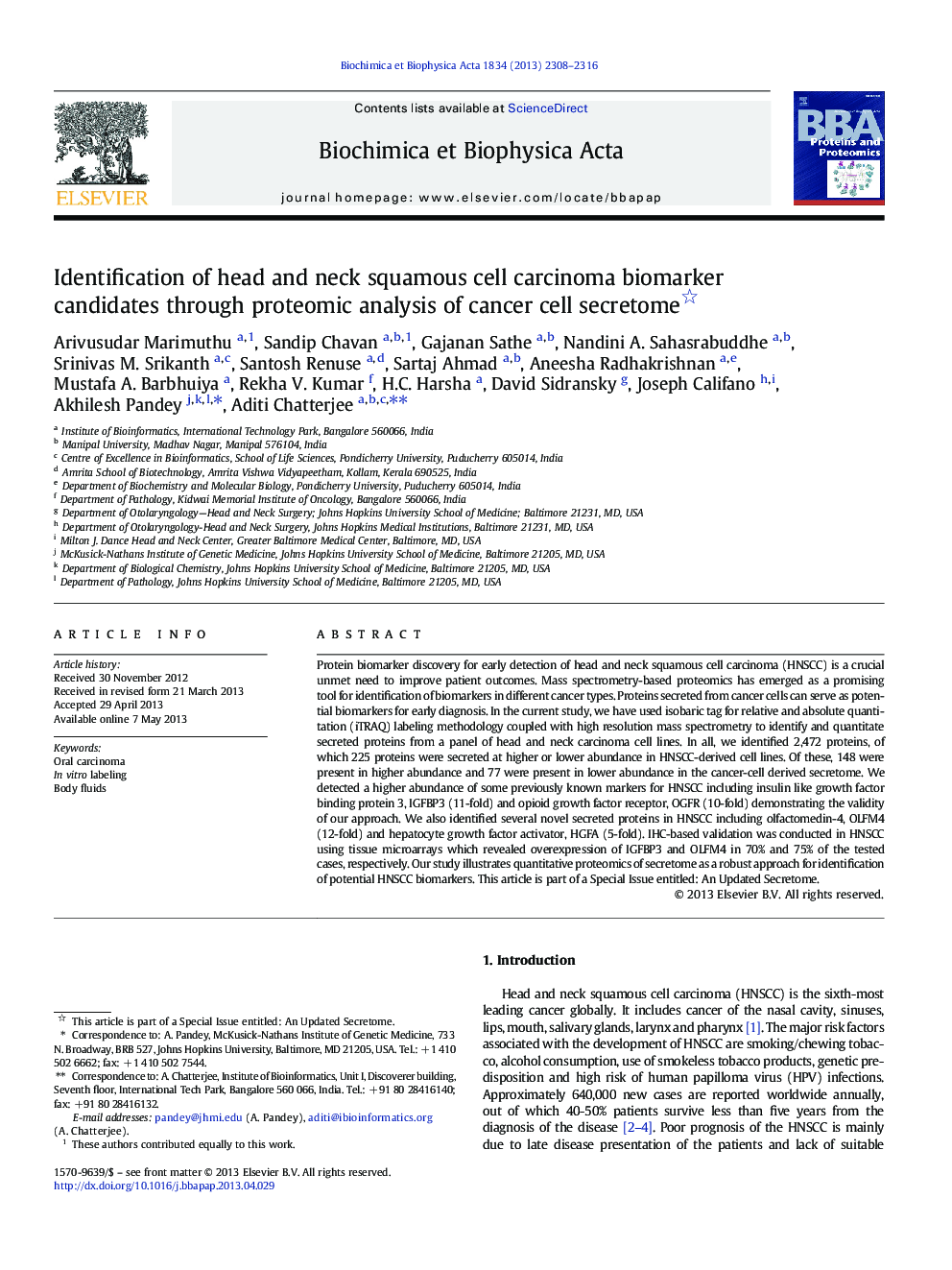| کد مقاله | کد نشریه | سال انتشار | مقاله انگلیسی | نسخه تمام متن |
|---|---|---|---|---|
| 1178463 | 962694 | 2013 | 9 صفحه PDF | دانلود رایگان |

• Report of largest cancer secretome known till date
• Most extensive quantitative profile of head and neck cancer
• Validation of a novel potential biomarker — OLFM4 in HNSCC using tissue microarrays
Protein biomarker discovery for early detection of head and neck squamous cell carcinoma (HNSCC) is a crucial unmet need to improve patient outcomes. Mass spectrometry-based proteomics has emerged as a promising tool for identification of biomarkers in different cancer types. Proteins secreted from cancer cells can serve as potential biomarkers for early diagnosis. In the current study, we have used isobaric tag for relative and absolute quantitation (iTRAQ) labeling methodology coupled with high resolution mass spectrometry to identify and quantitate secreted proteins from a panel of head and neck carcinoma cell lines. In all, we identified 2,472 proteins, of which 225 proteins were secreted at higher or lower abundance in HNSCC-derived cell lines. Of these, 148 were present in higher abundance and 77 were present in lower abundance in the cancer-cell derived secretome. We detected a higher abundance of some previously known markers for HNSCC including insulin like growth factor binding protein 3, IGFBP3 (11-fold) and opioid growth factor receptor, OGFR (10-fold) demonstrating the validity of our approach. We also identified several novel secreted proteins in HNSCC including olfactomedin-4, OLFM4 (12-fold) and hepatocyte growth factor activator, HGFA (5-fold). IHC-based validation was conducted in HNSCC using tissue microarrays which revealed overexpression of IGFBP3 and OLFM4 in 70% and 75% of the tested cases, respectively. Our study illustrates quantitative proteomics of secretome as a robust approach for identification of potential HNSCC biomarkers. This article is part of a Special Issue entitled: An Updated Secretome.
Journal: Biochimica et Biophysica Acta (BBA) - Proteins and Proteomics - Volume 1834, Issue 11, November 2013, Pages 2308–2316